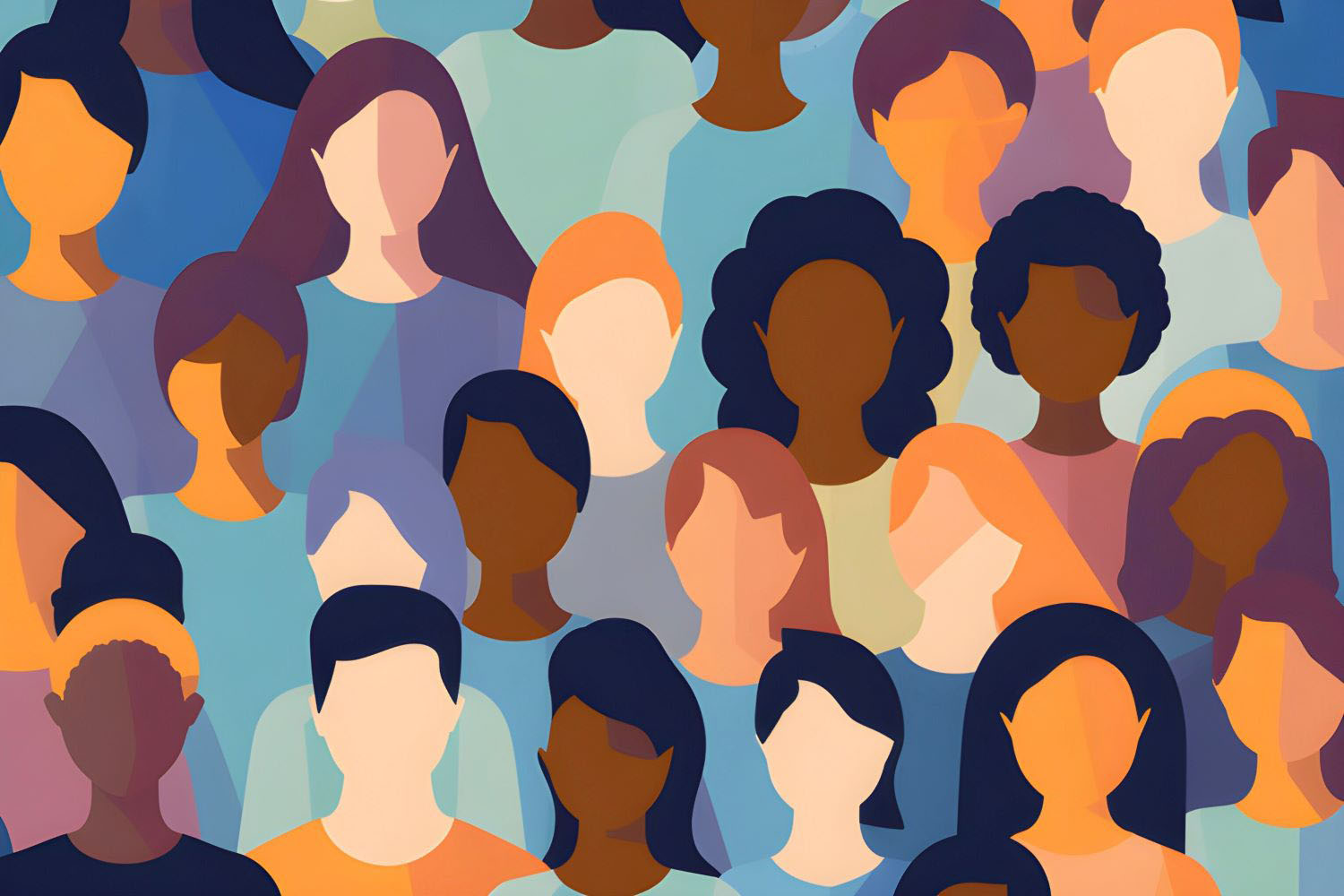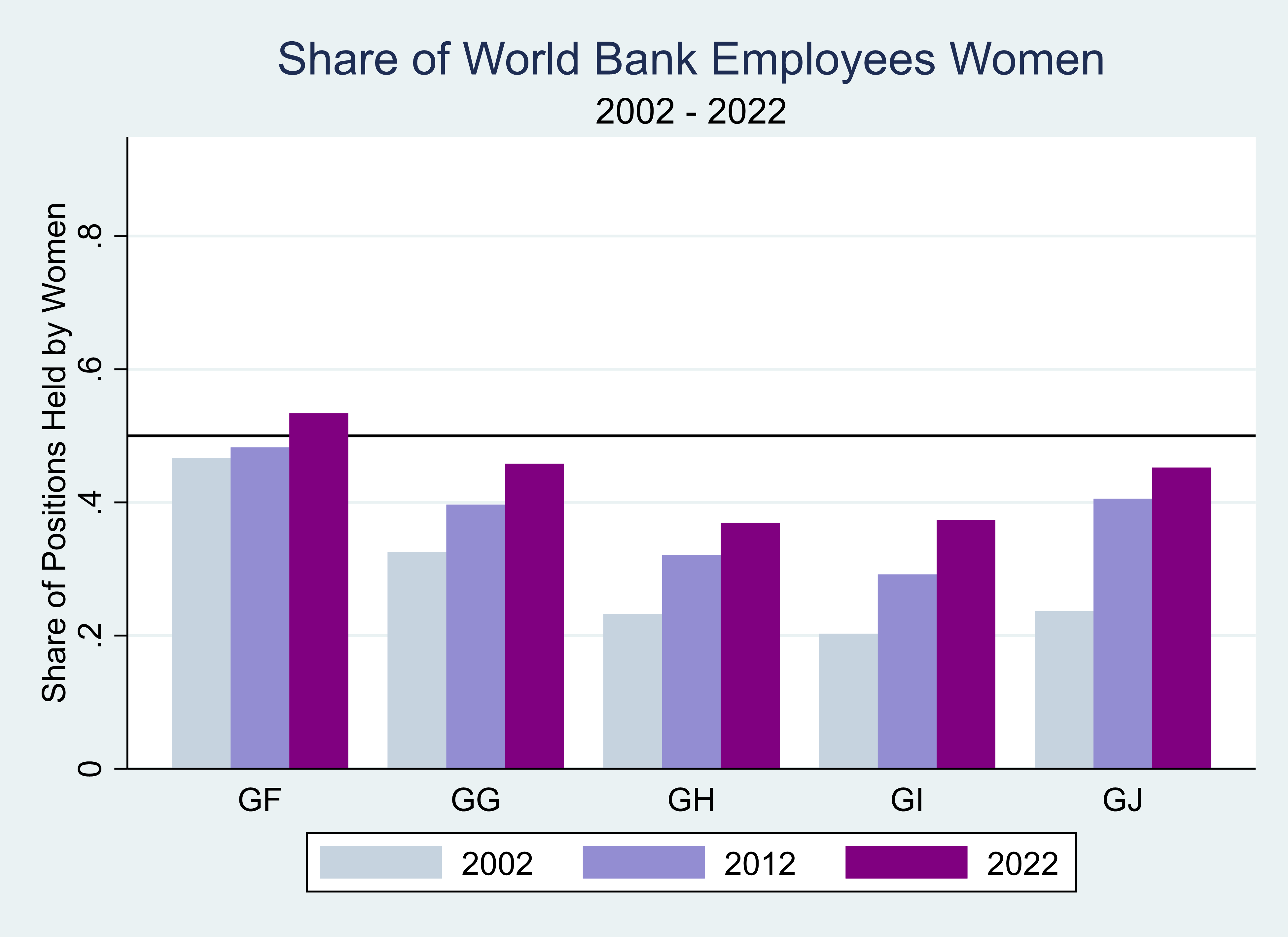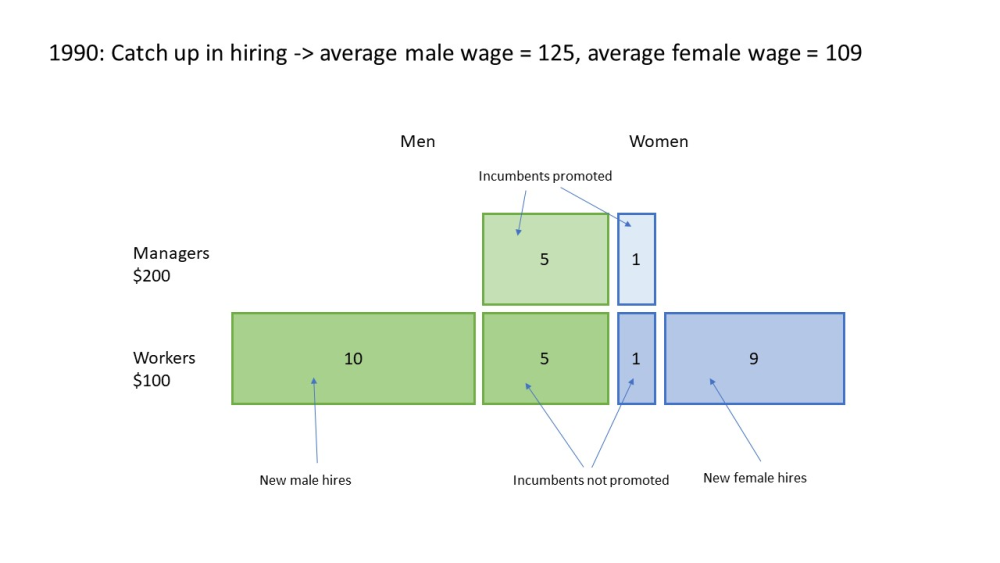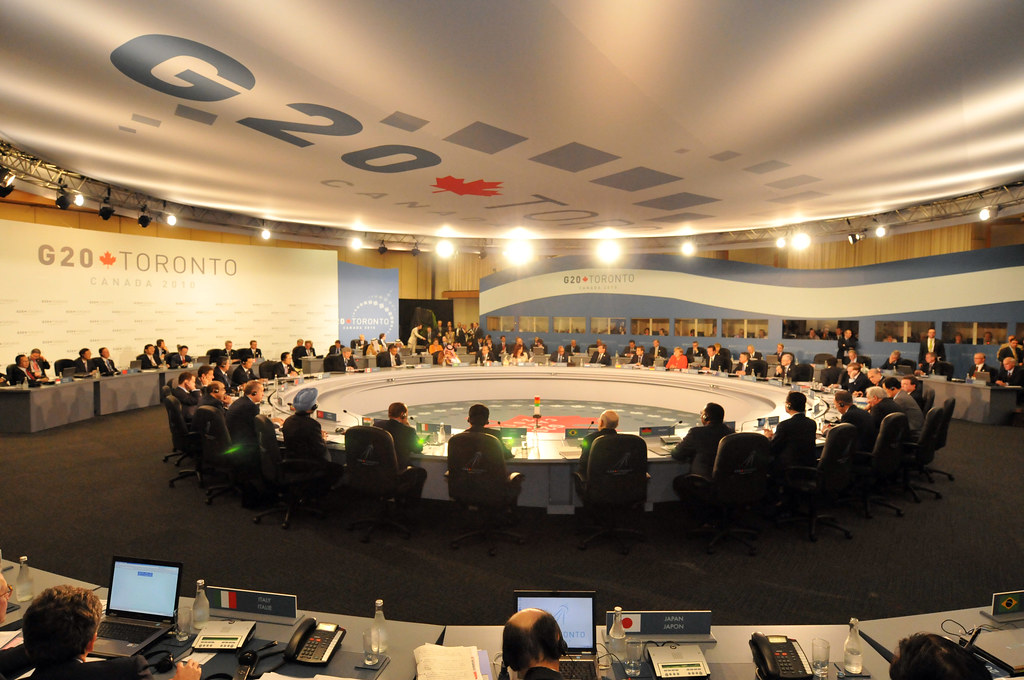Recommended

Blog Post

At CGD, we have been piecing together various parts of the conversation on why, despite decades of rigorous evidence on the returns to diversity, equity, and inclusion for high-quality policymaking, IFI workforces are still so far from gender parity, especially in managerial cadres. As part of this conversation, we are bringing in widely respected academic researchers who have conducted in-depth analysis on various dimensions of the issue, from the returns to diversity to the effect of diversity on the quality of development policy to the gender pay gap at the IFIs, and even perceptions of the reliability of advice when it comes from men versus women. And true to our intention of centering the lived experiences at the heart of this conversation, we will also feature commentary from current and former IFI staff. Through this dialogue, we hope to empower the champions within each institution to catalyze a process of the deep-seated cultural change that will lead to a resilient push for DEI and contribute to a broader conversation about the primacy of diversity in leadership.
In an organization like the World Bank that has long favored men in their hiring process, most senior managers will be men because organizations prefer to promote from `within’ at the senior level. Suppose that, recognizing the need to diversify, the Bank starts hiring more women at entry-level positions, with the understanding that they will be promoted in the usual manner.
What will happen to the gender pay gap?
Surprisingly, until things stabilize, this change in hiring will increase the gender wage gap at the organization, even if the promotion rates and salary increase for women are exactly the same as men. In a static picture of the organization, the grade structure will then register as a powerful glass ceiling or a broken pipeline, with women over-represented at lower vs. higher grade.
Here is a simple example. Suppose that 10 men and 2 women are hired in 1985 as workers at the same salary of $100. In 1990, exactly half are promoted, so that 5 men and 1 woman become managers and are paid $200. To equalize the gender balance, 10 new men and 9 new women are hired as workers. Now there are 5 male managers and 15 male workers (10 new + 5 old) as against 1 female manager and 10 female workers (9 new and 1 old). The average salary of men is $125, while for women it is $109. A gender wage gap has emerged even though there is no difference in entry salary or promotions. (Interestingly, if the firm had made no attempt to correct the gender balance in hiring, and hired 10 men and 2 women as workers again in 1990, there would not have been a gender gap.)
Thus, rectifying the gender gap in representation can lead to a gender gap in wages that can persist for some time.
It would be obviously wrong to penalize the firm because of this gender wage gap. In fact, a narrow focus on the pay gap may prevent the firm from correcting its representation bias. On the other hand, we would find a very similar pattern if the organization was truly discriminating against women, either because of a glass ceiling or different promotion rates among men and women.
In order to distinguish between the two, what is needed then is a way to decompose gender gaps within firms into their constituent portions. This is what Clement Joubert and I attempt to do in our work on the sources of the gender gap at the World Bank., including our 2023 paper "Women in the pipeline: A dynamic decomposition of firm pay gaps."
A story in four figures
The story can be told in four figures from that paper. All you need to know in terms of jargon is, first, that World Bank staff grades GA-GD are admin staff, GE-GH are (roughly) technical staff, and GI-GK are directors, VPs and the president; and, second, that there are two types of countries at the World Bank—Part 1 countries are those that customarily lend to the World Bank and Part 2 are those that borrow.
Figure 1 shows that there is a gender wage gap at the World Bank that has closed steadily, but still remained substantial in 2015, the last year of our data.
Figure 1: The average salary of women at the World Bank compared to men from Part 1, or lending countries has steadily caught up, but remained significantly lower in 2015
In Figure 2 we see that, over time, the World Bank has hired more and more external hires at who are women. For technical and managerial staff, the World Bank had nearly achieved parity by 2015. For support staff, there is substantial under-representation, but of men.
Figure 2: Women increasingly represent external hires at the World Bank
Next, to understand Figures 3 and 4, consider the following thought experiment. Suppose there is only one position at the World Bank and all staff were hired in 1985. Suppose by 2015, women are paid 20 percent less than men. There are only two ways that this could happen:
EITHER
Women were paid less than men when they joined—an “Entry Salary Gap”
OR
The pay gap increased with tenure—perhaps due to promotions or lower raises—a “Salary Growth Gap”
(OR it could be a bit of both)
Figure 3 shows that the “Entry Salary Gap” for staff hired at the GG position (as an example) was sizeable between 1985 and 1992 and then stabilized at around 4 percent. Figure 4 shows how the gender gap evolves with tenure; for GG, it reduces and for GF it increases. Both entry salary and salary growth gaps are typically < 5 percent.
Figure 3: The gap in entry salaries
Figure 4: The gap in salary growth
Finally, in addition to entry gaps or gaps in salary growth, the remaining two forces are what we call the “retention gap” and the “grade composition effect.” The retention gap takes account of the fact that staff may also leave the World Bank. If, for instance, the World Bank struggled to retain high-performing women, the remaining women would have lower salaries than the remaining men. The grade composition effect is what we highlighted at the beginning of this post: Even if there are no differences in entry salaries or salary growth, a gender gap can emerge if (a) managers are paid more than workers and (b) the firm hired more male workers until 1985, but then tried to equalize.
Putting all this together and accounting for the fact that every year, people are hired in different positions, people leave, some are promoted etc., leads to our new dynamic decomposition method that allows us to precisely say what fraction of the gender gap in 2015 is due to the entry salary gap, the salary growth gap, the retention gap, and the “grade composition effect”.
The bottom line?
The raw gender wage gap at the World Bank was 23 percent. Of this, 77 percent was due to the grade composition effect. This means two things. First, the kind of perverse effects that we outlined at the outset of this blog—that a gender wage gap would emerge if an organization moves to equalize representation starting from a workforce that was skewed in terms of gender balance—is a real concern. In the World Bank, this force accounts for more than three-quarters of the gender wage gap we saw in 2015. Second, this means that women who were hired at the same grade in the same year as men would still face around a 5 percent salary deficit over their career.
Final thoughts
-
5 percent is a lot, but it is not 23 percent. The World Bank may be one of the institutions that has come close to parity in the way that women and men are paid. This was achieved on the backs of many pathbreaking women who fought every step of the way.
-
This kind of statistical mirroring has little to say about fairness. If women are more qualified or working harder than men, they should be earning more, not the same. Similarly, if there are more women than men in this field, 50/50 is not the fair split.
-
There are many other problems of a grave nature that women may face at the World Bank. That pay gaps are 5 percent or so means that more focus can be given to these grave issues.
The World Bank made a fantastic effort to assemble longitudinal personnel records spanning 1987-2015. Annual updates of the database should be automated and processes put in place to request anonymized statistics from it. Transparency can help foster trust between staff and institutions.
Disclaimer
CGD blog posts reflect the views of the authors, drawing on prior research and experience in their areas of expertise. CGD is a nonpartisan, independent organization and does not take institutional positions.
Image credit for social media/web: Vadym / Adobe Stock












